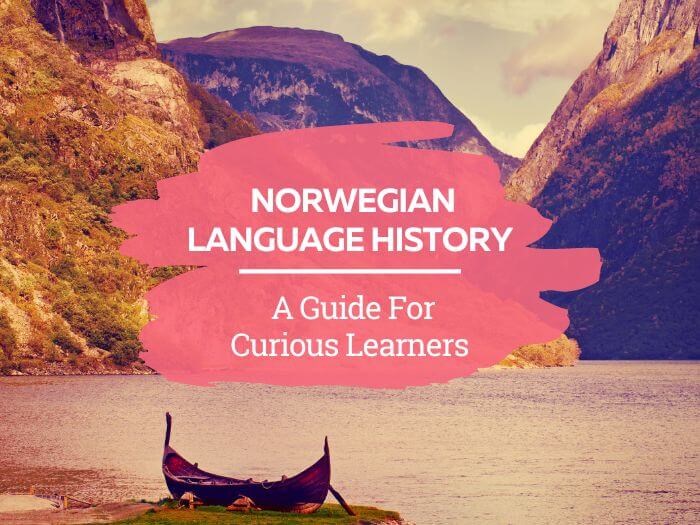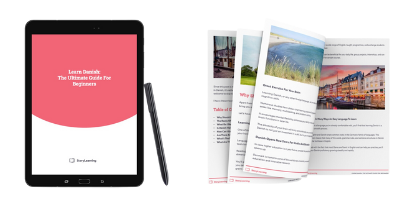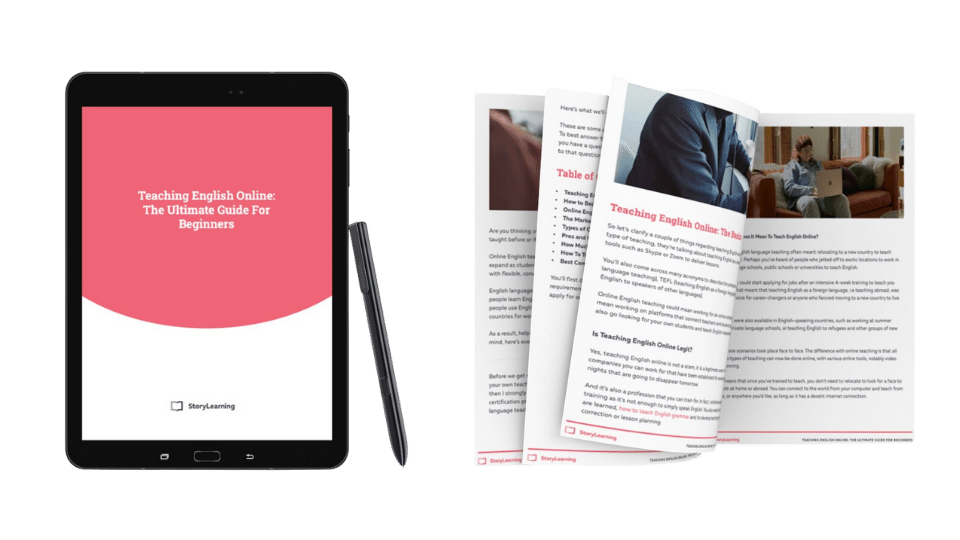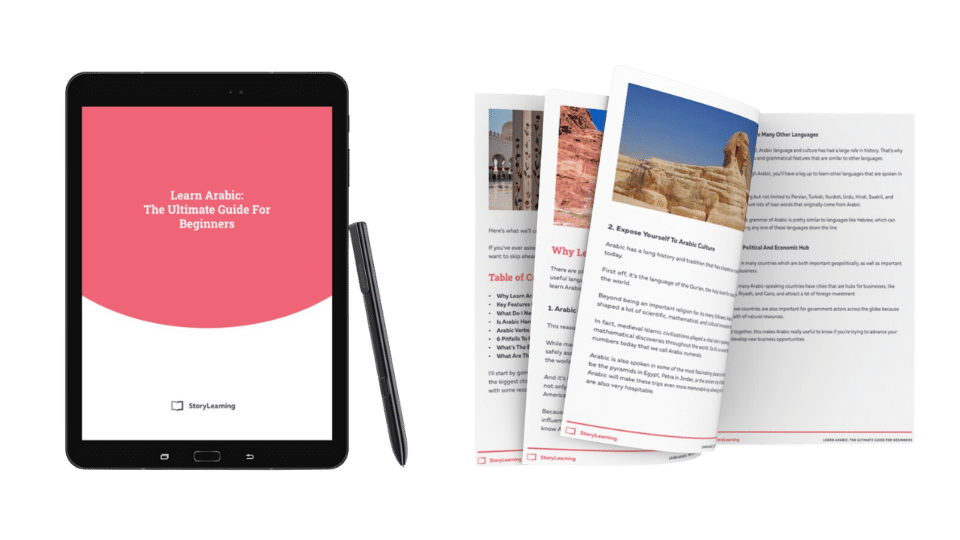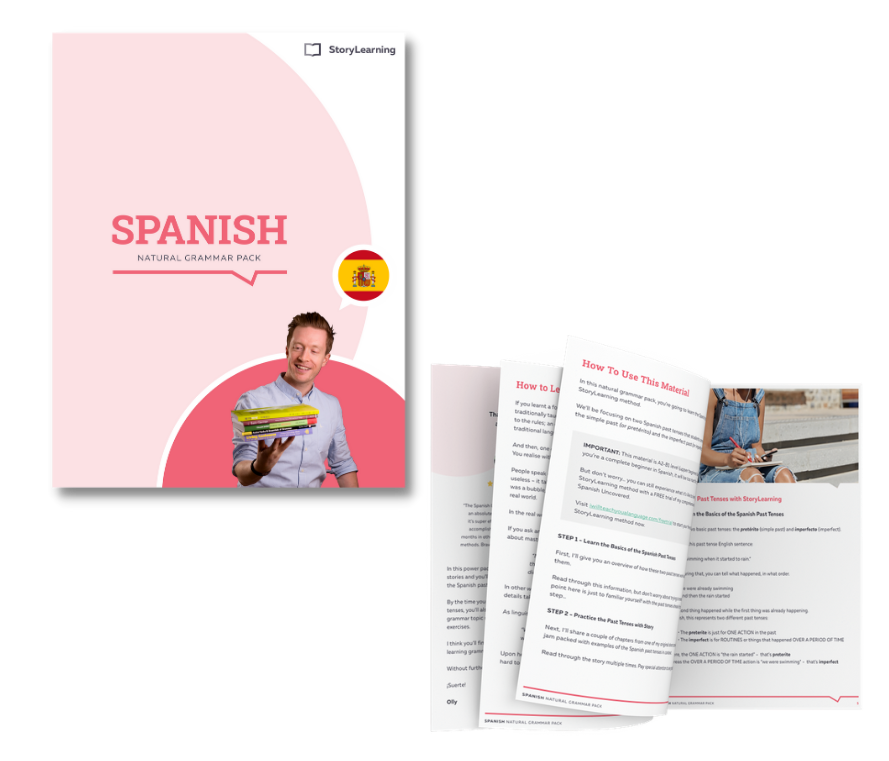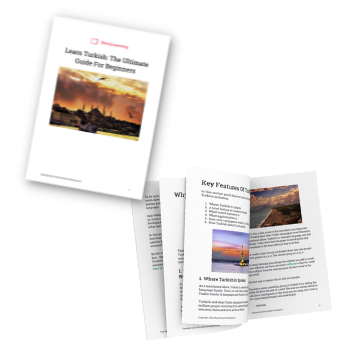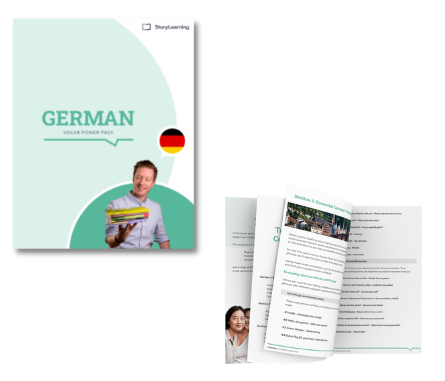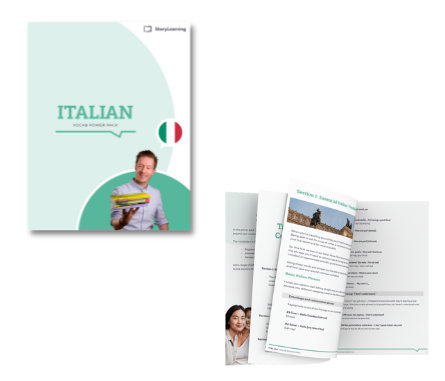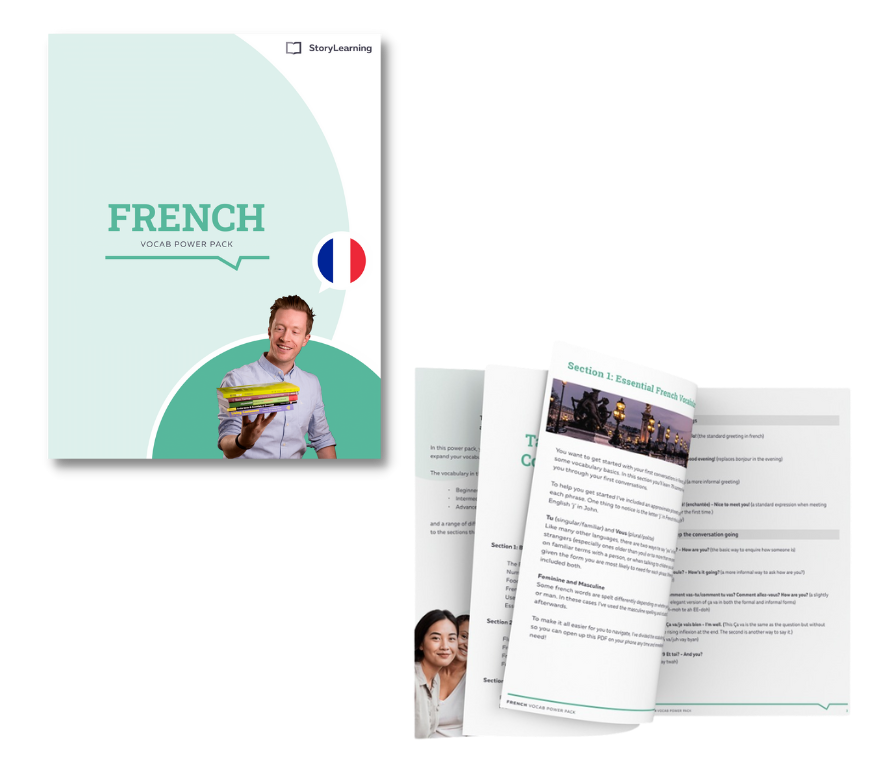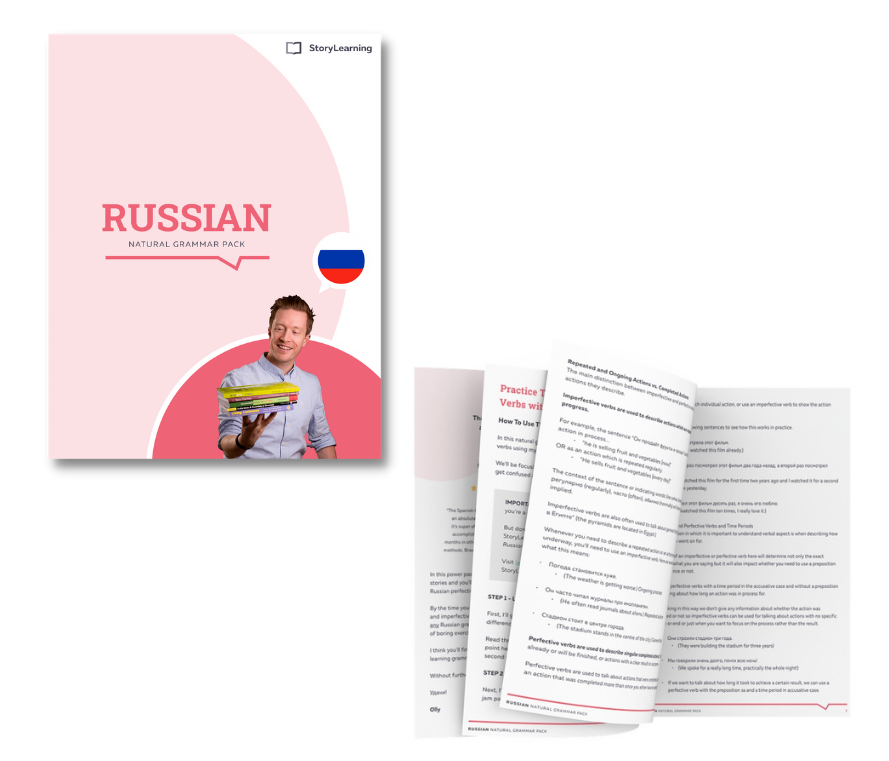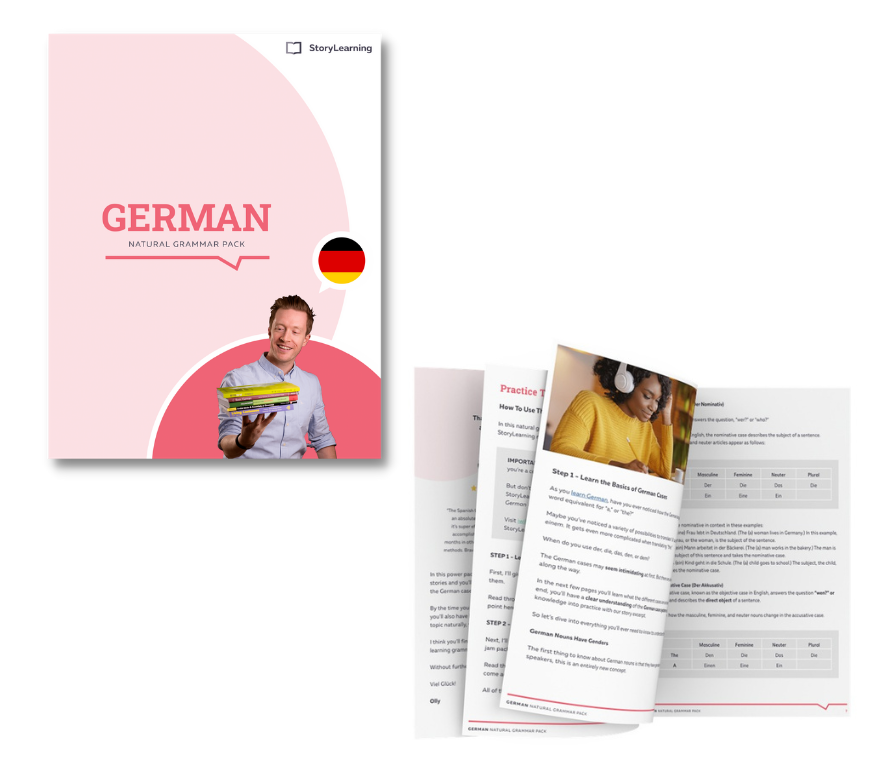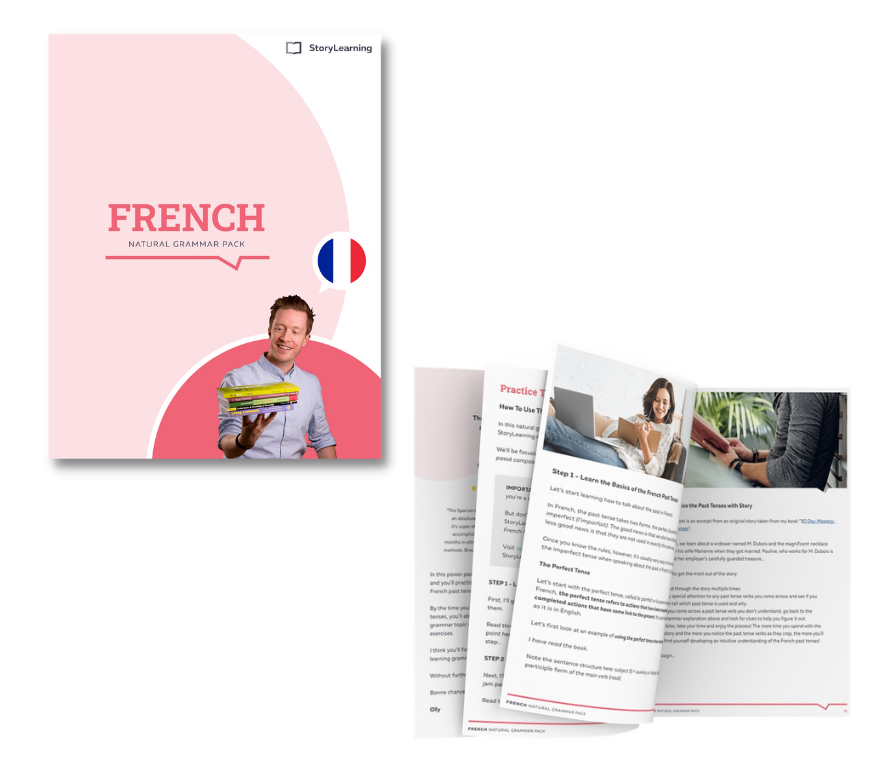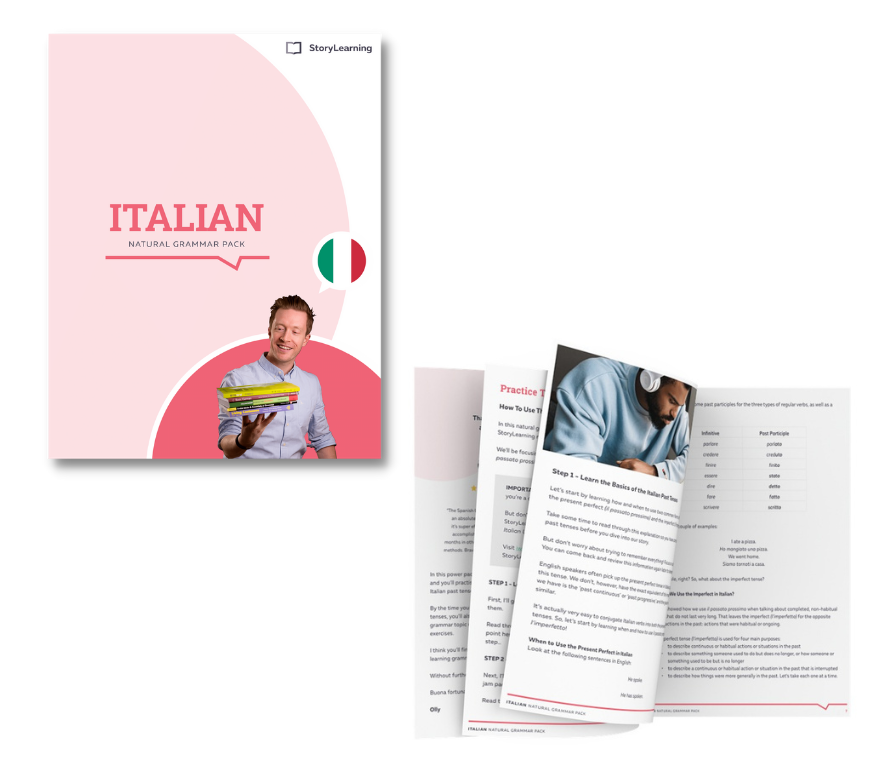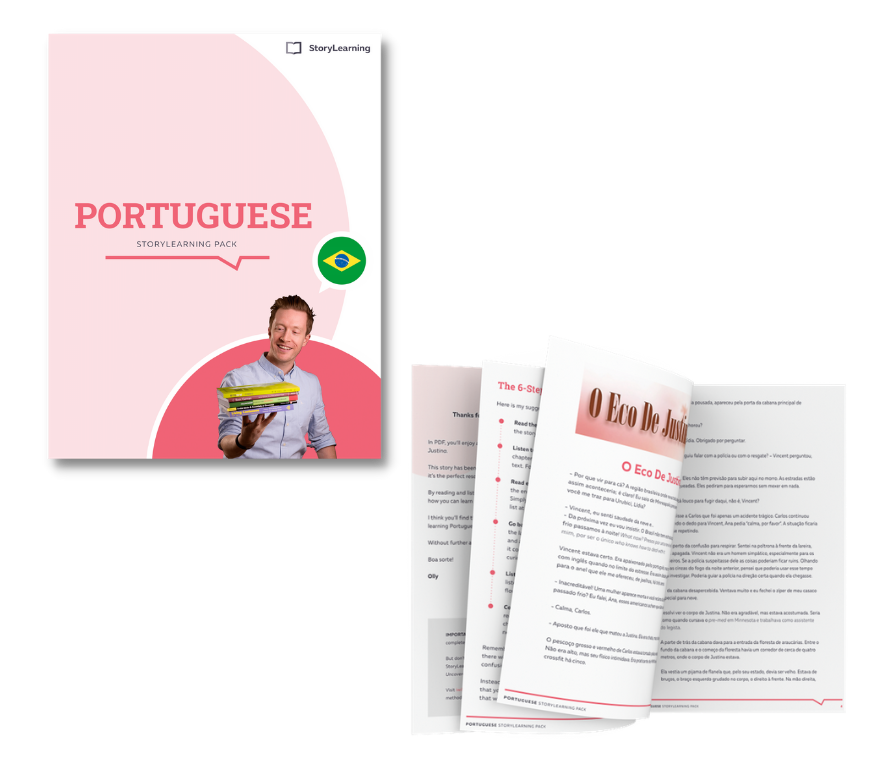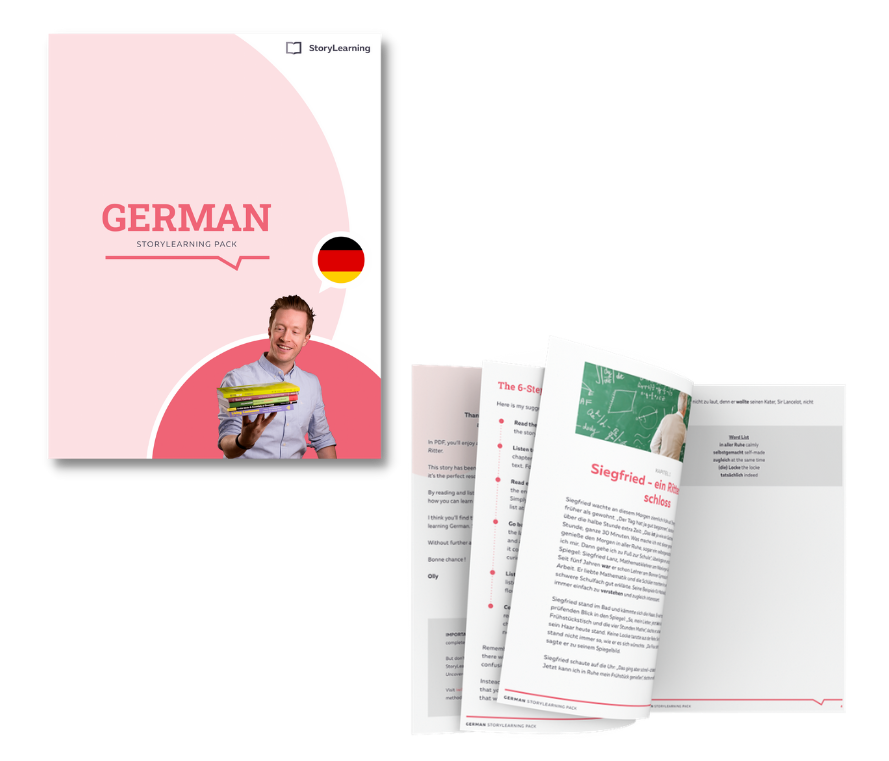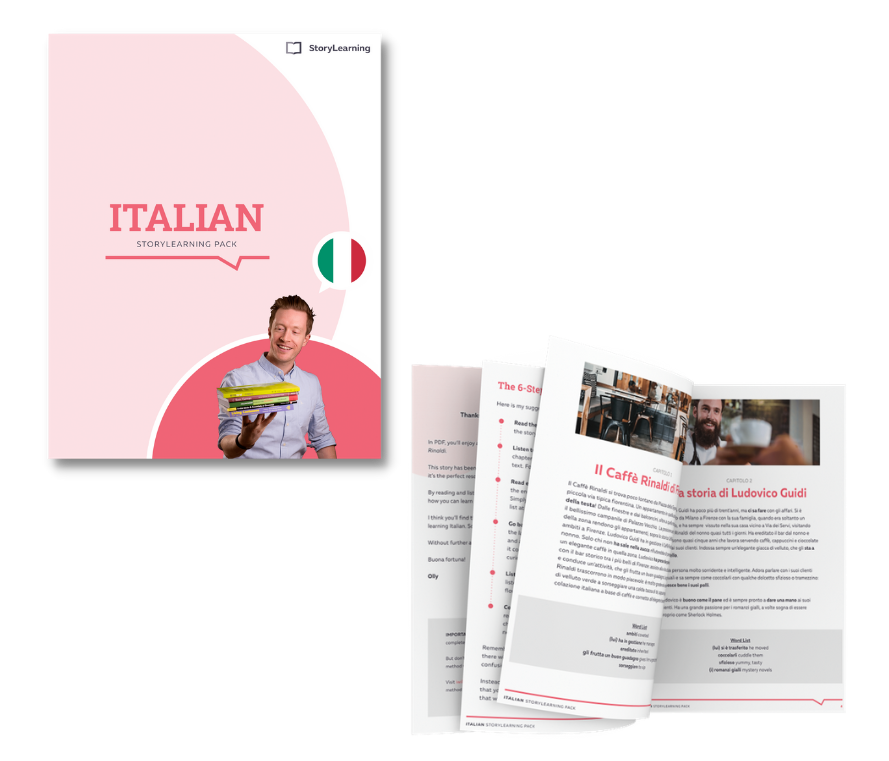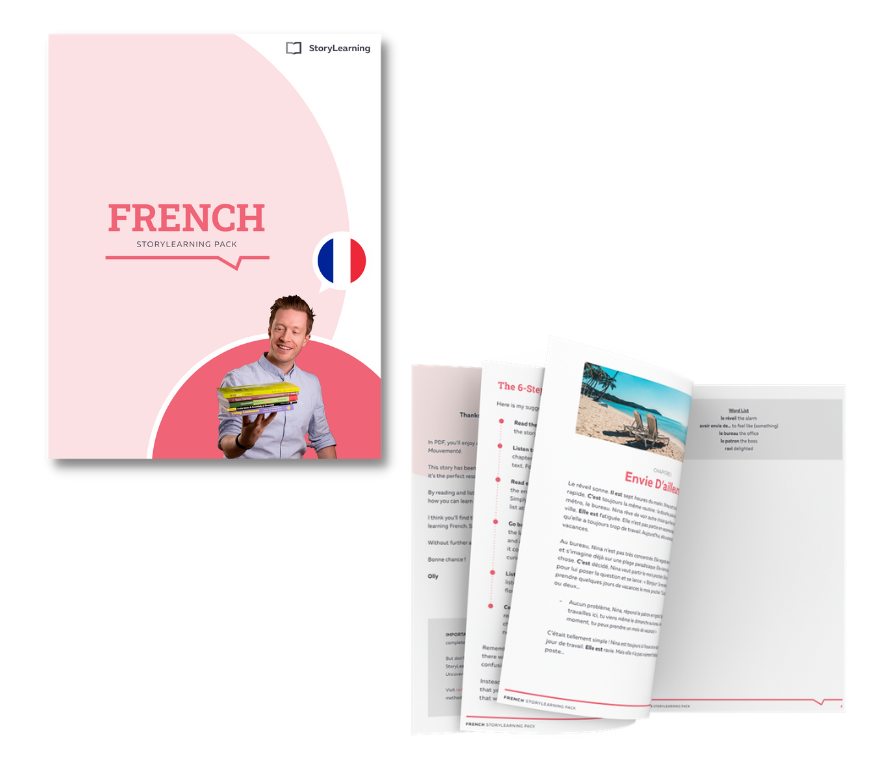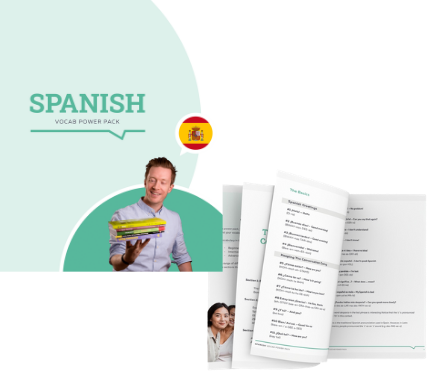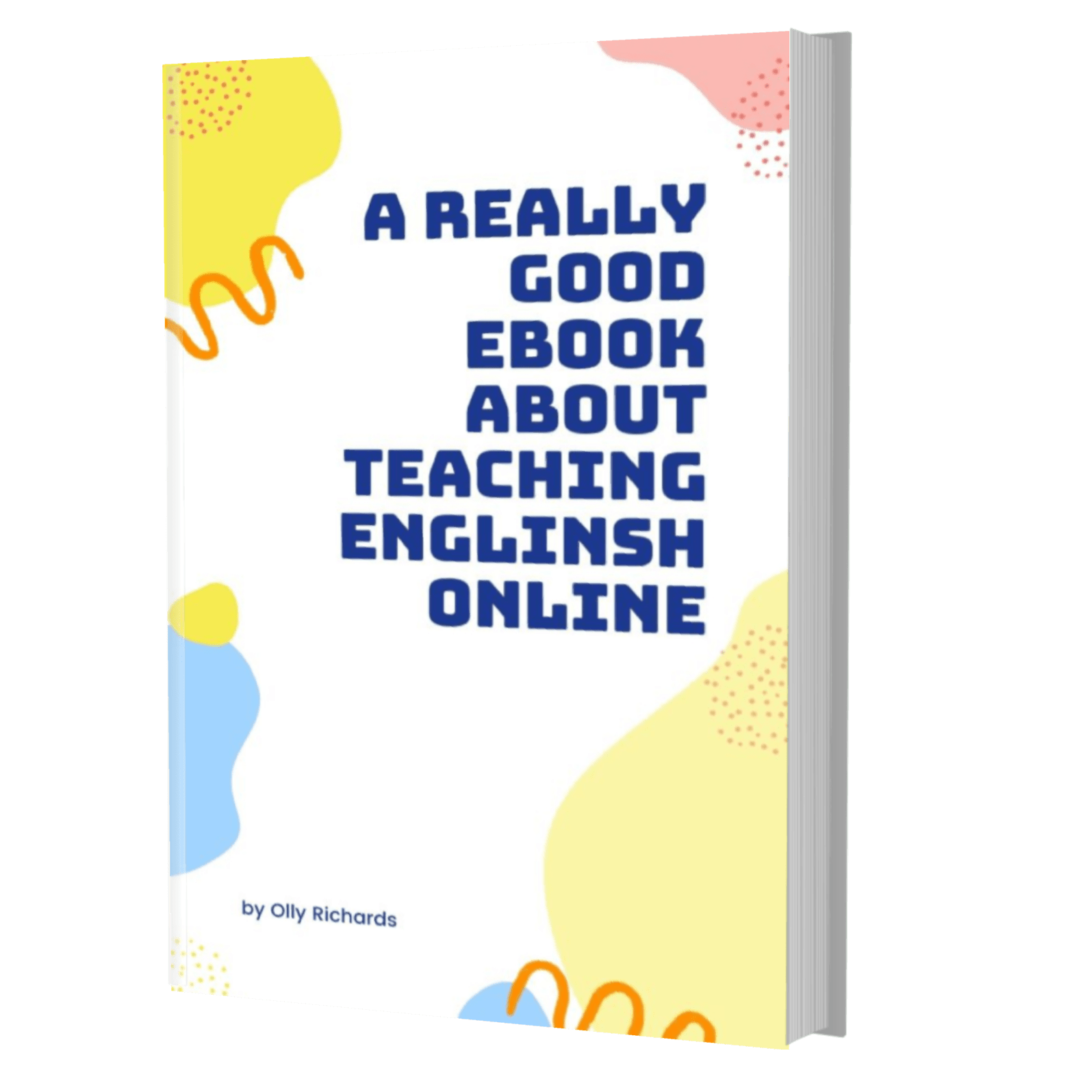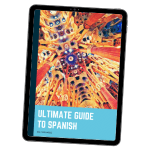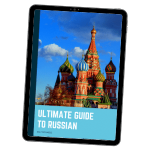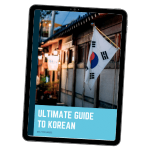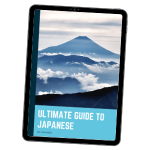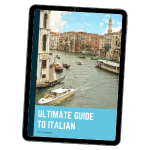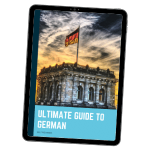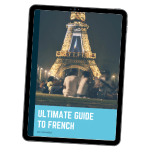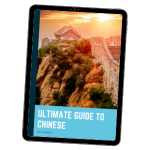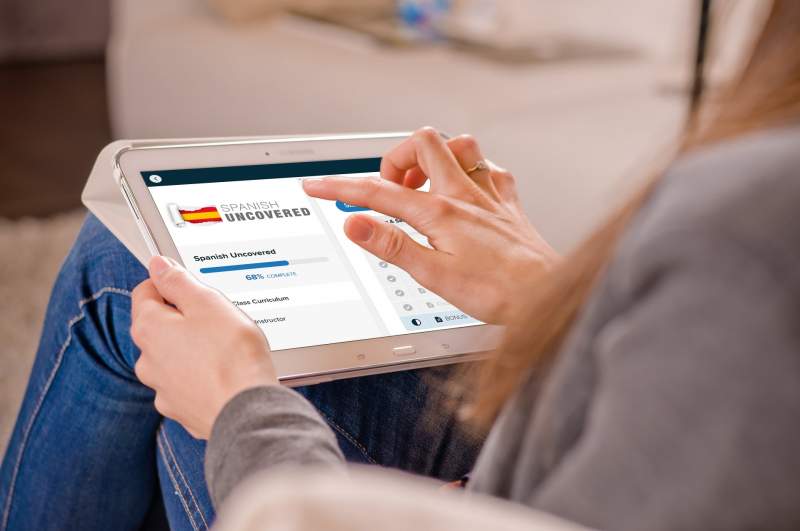When you learn Norwegian, it can be useful to know a little bit about Norwegian language history. After all, how exactly did Norway come to have three official languages: Bokmål, Nynorsk and Sámi?
The answer can be found in the fascinating story of Norwegian language history!
Nowadays, only 1% of the population in Norway speak Sámi (the language of the indigenous Nordic population of the Sámi people). So this brief overview will stick to Bokmål, Nynorsk and all the other offshoots Norwegian language history has produced.
Time to go back in time and discover Norwegian language history!
Pro Tip
By the way, if you want to learn Norwegian fast and have fun, my top recommendation is Norwegian Uncovered which teaches you through StoryLearning®.
With Norwegian Uncovered you’ll use my unique StoryLearning® method to learn Norwegian through story…not rules. It’s as fun as it is effective. If you’re ready to get started, click here for a 7-day FREE trial.
You can use the table of contents below to skip to the part of the post that interests you the most. Otherwise, keep reading to discover everything you need to know about Norwegian language history.
Table of Contents
Old Norse

We all have to begin somewhere, and as it happens, Norwegian language history started off with the Vikings.
Old Norse, or Norrønt in Norwegian, was the language of the raiders from the North, coming from Norway, Sweden, Denmark, Iceland and the then independent islands of Faroe, Orkney, Shetland, and Greenland.
Old Norse developed out of the Proto-Germanic languages of Northern Europe, including the UK, and was spoken as well as written in Norway and the rest of Scandinavia from between 700 AD to 1350 AD.
To begin with, Norwegian, Swedish, Danish and Icelandic Vikings all spoke the same language, with some local variations. So how old is the Norwegian language?
Well, after 1030 AD with the establishment of kingdoms in the Northern countries, these dialects developed into languages in their own right.
There are still a fair number of words in the Norwegian vocabulary that can be traced back to the Vikings. But only the Icelandic have maintained most of the writing and pronunciation style of the warriors of old.
If you want to learn more about the Old Norse language, take a look at my blog posts on the history of the Danish Language and the history of the Swedish Language.
Old And Middle Norwegian

When the Viking era ended with the advent of Christianity in the early 11th century (especially after the ‘Battle of Stiklestad’ in 1030 AC which saw the first Christian king ascend the throne of Norway) the language also changed. In most places, Old Norse became Old Norwegian.
Christianisation inevitably came with the Latin language and the former Vikings, instead of influencing the language of the countries they raided, were themselves now exposed to influences from outside.
Quite interestingly, a form of Old Norwegian called Norn remained spoken on the Scottish islands of Orkney and Shetland until the middle of the 19th century when the last Norn speaker died.
One of the major changes from Old Norse to Old Norwegian was the removal of the h in front of –n, -l and –r at the beginning of words.
Starting in 1350 AD, Old Norwegian was superseded by Middle Norwegian and lost further connections to Old Norse by removing several of the distinguishing letters, including þ and ð, replacing them with –t and –d.
Middle Norwegian as a self-contained language survived in Norway until the middle of the 16th century, when it was phased out by the forced dominance of Danish which took over the country.
Danish-Norwegian And Norwegian-Danish
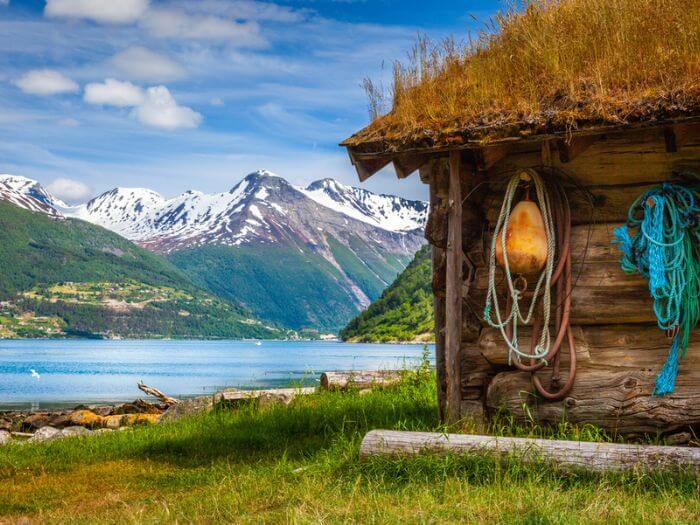
In 1349, within only a couple of months two ships arrived in Norwegian harbours. One came from England and docked in Bergen, while the other quite probably had left the Mediterranean to land in Oslo.
Both carried the plague, and within only a couple of years, the population in Norway was reduced by 60%.
Unlike in neighbouring Sweden and Denmark, the plague in Norway also eliminated the Norwegian aristocracy and clergy, leaving the country weakened and barely able to rule itself.
Almost 50 years later in 1397, Norway joined Sweden and Denmark in the Kalmar Union and thereby also unwittingly surrendered its language.
Still, Middle Norwegian continued to be both spoken and to a certain extent written in the country for another hundred years.
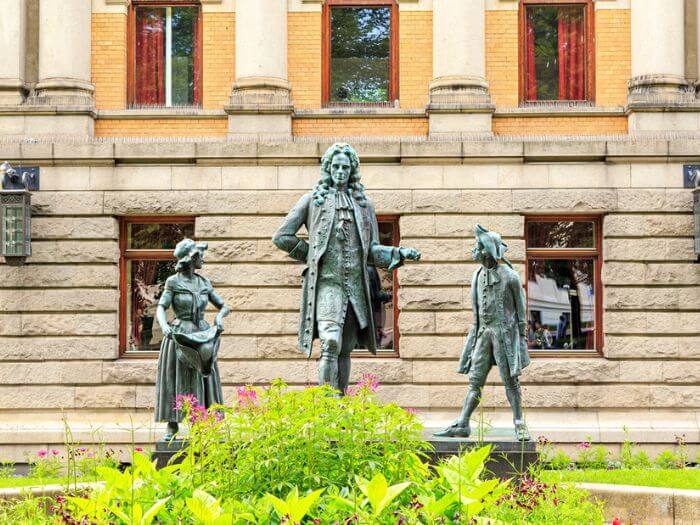
After Sweden left the Union, in 1537 Denmark declared Norway a Danish province and Norwegian became increasingly influenced and subsequently erased by Danish – at least in the written form.
Alongside Danish German also became a major influence on Norwegian through the Hanseatic League, which settled in Bergen during the Middle Ages.
Much of the trade of Norway-Denmark was performed in the German language and you can still find the remnants of German in many Norwegian words, including herlig (herrlich: wonderful), å høre (zu hören: to hear/listen), å spise (zu speisen: to eat).
Norway always had a clear distinction between rural and urban society and during the time of Danish colonisation, the differences became especially clear.
The urban population increasingly embraced Danish as the official language as it came with trade, education and power, developing a Danish-Norwegian (Dano-Norwegian) language which still maintained a few Norwegian characteristics.
The Norwegian countryside, however, developed their own dialects that still were based in part on Old or Middle Norwegian, though also taking some Danish into account, especially since the bible in Church on Sundays was read in Danish.
The two different developments would have a huge impact on Norwegian language history and the two main languages that still reverberates to this day.

Riksmål
In 1814, after backing the wrong side in the Napoleonic War, Denmark was forced to cede Norway to Sweden, which had backed England and the winning side.
The decision of cessation was made without the consent of the Norwegians who rebelled against being thrown into the arms of another colonial power.
A brief war between Norway and Sweden ensued, lasting all of the summer of 1814 and ending in a treaty, where Norway would be allowed to be self-governing with its own constitution and government, but still placed under the Swedish crown.
Free to rule itself for the first time in almost 500 years, a new confidence arose in the Norwegians and the wish to develop a national identity away from the former neighbours and colonial powers evolved.
Language being a major part of a national identity, several Norwegian writers set to work to shape a distinct Norwegian language away from the still dominant Danish.
As 500 years of Norwegian language history can't simply be erased from one day to the next, the new Norwegian language would be based on the framework set by the Danish language but adjusted to Norwegian everyday use.
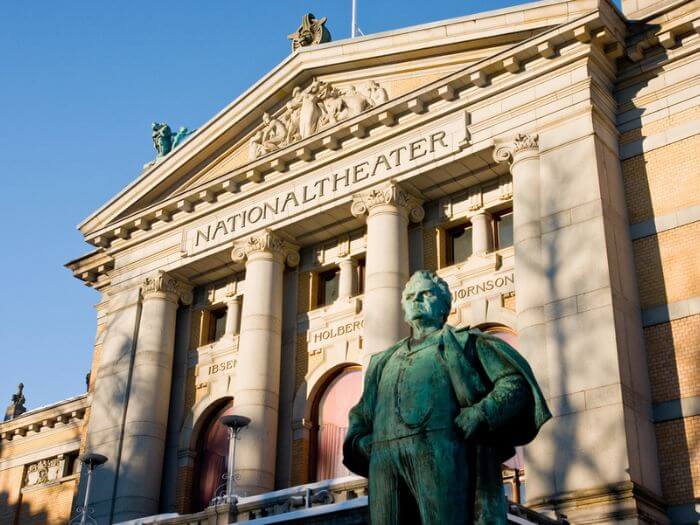
Prominent Norwegians like Henrik Wergeland and Bjørnstjerne Bjørnson set to work. The latter coined the expression Riksmål, the national tongue, for the rapidly developing ‘new’ language.
Knud Knudsen, a schoolteacher from Agder in the South of Norway, saw in practice how children in class struggled with adapting to the Danish written language that very much differed from what they spoke at home.

He therefore proposed and advocated for a language standard, that would unite colloquial Norwegian with the framework set by centuries of Danish usage, and another Norwegian language, Bokmål, was born.
Bokmål
Never mind which Norwegian language course you might sign up for, in 99,9% of cases you will be offered Bokmål. It’s the predominant language in the country, spoken by more than 90% of the population.
Even most Norwegians with a Nynorsk background (more on that in a second) will be able to read and understand this national language standard.
Bokmål has its origins in Riksmål, but takes colloquial language even more into consideration to reflect the way people speak at home and in society in general.

This Norwegian standard is constantly developing with new words, expressions and even grammar rules added annually by the Language Council of Norway (Norsk Språkrådet) to keep it updated.
The name Bokmål, which translates as ‘book tongue’ or ‘book language’, was officially introduced by the Norwegian parliament in 1929 when MPs voted 17 to 18 against the choice of dano-norsk (Danish-Norwegian) as a specification for the national language.
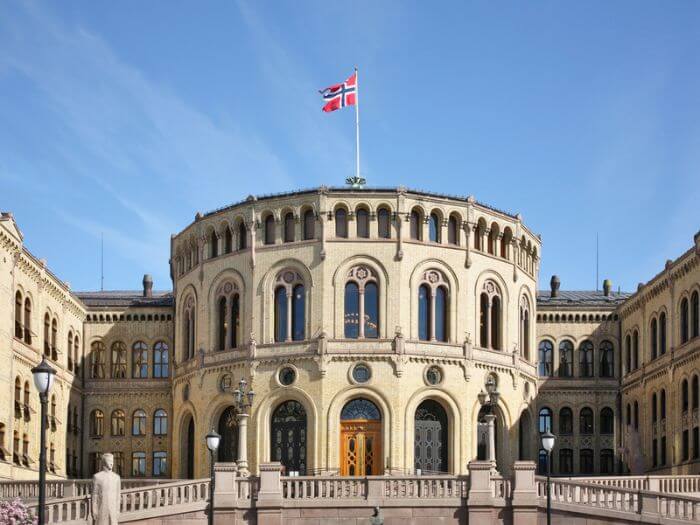
Unlike Riksmål, Bokmål’s purpose was to move further away from the still prevalent Danish-oriented standard and give it a more pronounced Norwegian affiliation the population could identify with.
In 1938, Bokmål became a mandatory language standard together with Nynorsk.
The establishment of Bokmål and the willingness to let the development of the language take its natural course from then on didn't go down well with the old guard and defenders of Riksmål, who wanted the more rigid standard to prevail.
Certain academics and intellectuals, and also the biggest Norwegian broadsheet newspaper Aftenposten, still stick to Riksmal to this day, and are organised in the non-governmental association Riksmålsforbundet.
If you're wondering how big the differences between these two variations of Norwegian really are, they can best be compared to US English as opposed to British English.
Nynorsk
When it comes to Norwegian language history and the development of Norwegian languages, nothing has been as divisive as the establishment of Nynorsk.
Depending on who you ask – and where in this large country you are – Nynorsk will be either called ‘the only real’ Norwegian, or an ‘artificially constructed’ language.
By looking at the establishment of Nynorsk in Norway, you’ll soon discover that both camps in the debate are right.
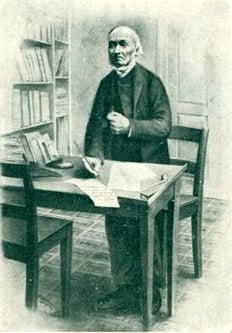
Nynorsk is the brainchild of the Norwegian poet Ivar Aasen (1813-1896), who in the 1840s started to travel around his native region on the west coast of Norway to collect the various Norwegian dialects spoken there.
By 1848, he had assembled enough material to publish his findings and in 1850, the Dictionary of the Norwegian Dialects came on the market.
Three years on, Aasen had managed to develop a common grammar out of the material he had found in the various dialects.
The intrepid hobby linguist worked for the rest of his life to develop and construct this language out of the dialects. And by the time of his death, Nynorsk had been well established in the schools and administrations in Western Norway.
In his original texts, Ivar Aasen called the language Landsmål (the country’s tongue). The assignment of the name Nynorsk first came long after his death when the Norwegian parliament attempted to settle the language chaos once and for all – but to no avail – in 1929.
Nowadays, between 10% and 15% of the Norwegian population (again, depending on who you ask) speak Nynorsk as their mother tongue.
It's also taught nationwide in schools and all Norwegians have at least a basic understanding of what started out as Ivar Aasen’s very personal project.
Samnorsk
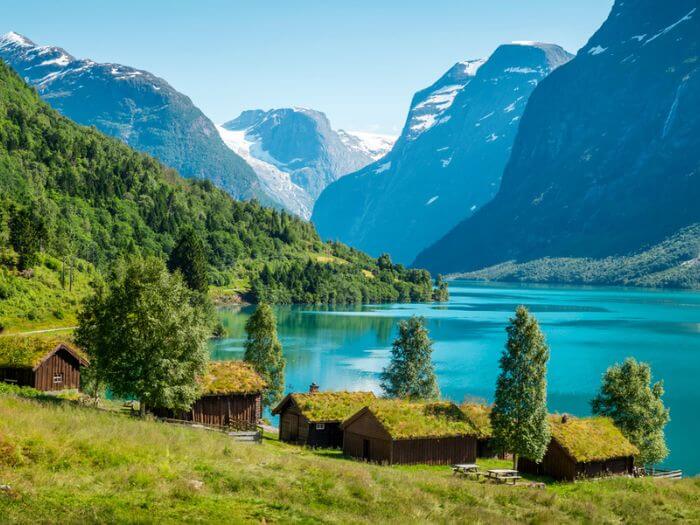
With so much controversy surrounding the two official Norwegian languages, some linguists and politicians in the country came up with the seemingly bright idea of combining Bokmål and Nynorsk into one language that should be at least written and read by all.
The combined language was called Samnorsk (common or collected Norwegian) and aimed to regulate written Norwegian into a singular standard to be used by all.
The process started in 1917 and led to a ‘language war’ that lasted for decades and to this day can incense devotees of both the Bokmål and the Nynorsk camps.
First in 2002 the project was officially given up after too large a proportion of the population objected to being exposed to yet another Norwegian language standard nobody used at home anyhow.
All measures to align the written styles and grammar of Nynorsk and Bokmål were stopped and the until then implemented changes were removed since very few stuck by them anyhow.
There are, however, still some militant proponents of the Samnorsk experiment who will adhere to the rules established through this truly artificially ‘planned out’ language.
FAQs About Norwegian Language History
Where did the Norwegian language come from?
From Old Norse, or Norrønt in Norwegian, the language of the Vikings.
Old Norse developed out of the Proto-Germanic languages of Northern Europe, including the UK, and was spoken as well as written in Norway and the rest of Scandinavia from between 700 AD to 1350 AD.
To begin with, Norwegian, Swedish, Danish and Icelandic Vikings all spoke the same language, with some local variations. But after 1030 AD with the establishment of kingdoms in the Northern countries, these dialects developed into languages in their own right.
There are still a fair number of words in the Norwegian vocabulary that can be traced back to the Vikings. But only the Icelandic have maintained most of the writing and pronunciation style of the warriors of old.
What language is closest to Norwegian?
The language closest to Norwegian is Danish, followed closely by Swedish. Danish is the closest to written Norwegian, while Swedish is closest in terms of spoken language.
Norwegian Bokmål (one of the two official written standards of Norwegian) is heavily influenced by Danish. This is due to historical ties, as Norway was under Danish rule for centuries.
These three languages (Norwegian, Danish, and Swedish) are part of the North Germanic or Scandinavian language group and are considered mutually intelligible to varying degrees, especially in their written forms.
Is Norwegian a Latin based language?
No, Norwegian is not a Latin-based language. Instead, it belongs to the Germanic branch of the Indo-European language family, specifically the North Germanic or Scandinavian subgroup.
Norwegian is closely related to other Germanic languages like Danish, Swedish, Icelandic, and Faroese.
Although Norwegian is not Latin-based, it has been influenced by Latin, just like many other European languages. This influence primarily comes through:
– Borrowed words from Latin, often related to science, law, medicine, and religion.
– French and English (which are partly Latin-based) have also influenced Norwegian vocabulary.
However, its grammar, core vocabulary, and sentence structure are fundamentally Germanic, not Latin-based.
What is the origin of the Norwegian language?
The origin of the Norwegian language can be traced back to Old Norse, the language spoken by the Vikings during the Viking Age (around 800–1100 AD).
Old Norse originated from Proto-Germanic, a common ancestor of all Germanic languages. Proto-Germanic evolved from Proto-Indo-European, the ancient language that is the ancestor of most European languages.
What language did Vikings speak in Norway?
The Vikings in Norway primarily spoke Old Norse during the Viking Age (approximately 800–1100 AD).
Old Norse was the common language of the Vikings across Scandinavia, including Norway, Denmark, and Sweden.
It was also spoken in areas colonised by Vikings, such as Iceland, the Faroe Islands, Greenland, and parts of the British Isles and Normandy.
As time went on, Old Norse developed into two major dialect groups:
– Old West Norse: Spoken in Norway, Iceland, and the Faroe Islands. This is the form of Old Norse that evolved into modern Norwegian, as well as Icelandic and Faroese.
– Old East Norse: Spoken in Denmark and Sweden. It eventually developed into Danish and Swedish.
However, during the Viking Age, the differences between these two forms of Old Norse were minimal, and speakers from different regions could easily understand one another.
Norwegian Language History And What It Means For You

When you read about Norwegian language history and the development of the Norwegian languages, especially Bokmål, you might wonder if there's any point in learning any of them.
With so much historic intertwining, why learn Norwegian when you could just learn Danish?
The fact is, nowadays Norwegian and Danish are completely different languages in their own right. They use different spellings, pronunciations, syntaxes and to a certain extent also a different grammar.
While Norwegians and Danish can still understand each other somewhat, especially in the written form, they often will have different meanings for the same word.
Take for example sød/søt which in Danish means “nice” and is applied to beings but means “sweet” in Norwegian and is used to describe food. The differences become even more marked when it comes to business and technology vocabulary.
Computer in Danish is “computer”, but in Norwegian it's a datamaskin. A company in Danish is virksomhed, but in Norwegian bedrift.
If your interest lies with Norway, it pays to learn Norwegian, if only to show respect for Norwegian language history and the historic struggle of the country to finally have a language of its own.
To learn Bokmål, and to see for yourself how amazing the Norwegian language has become over the years, all you have to do is to sign up for Norwegian Uncovered or get my Short Stories in Norwegian for Beginners and you’ll be on your way.

Olly Richards
Creator of the StoryLearning® Method
Olly Richards is a renowned polyglot and language learning expert with over 15 years of experience teaching millions through his innovative StoryLearning® method. He is the creator of StoryLearning, one of the world's largest language learning blogs with 500,000+ monthly readers.
Olly has authored 30+ language learning books and courses, including the bestselling "Short Stories" series published by Teach Yourself.
When not developing new teaching methods, Richards practices what he preaches—he speaks 8 languages fluently and continues learning new ones through his own methodology.
